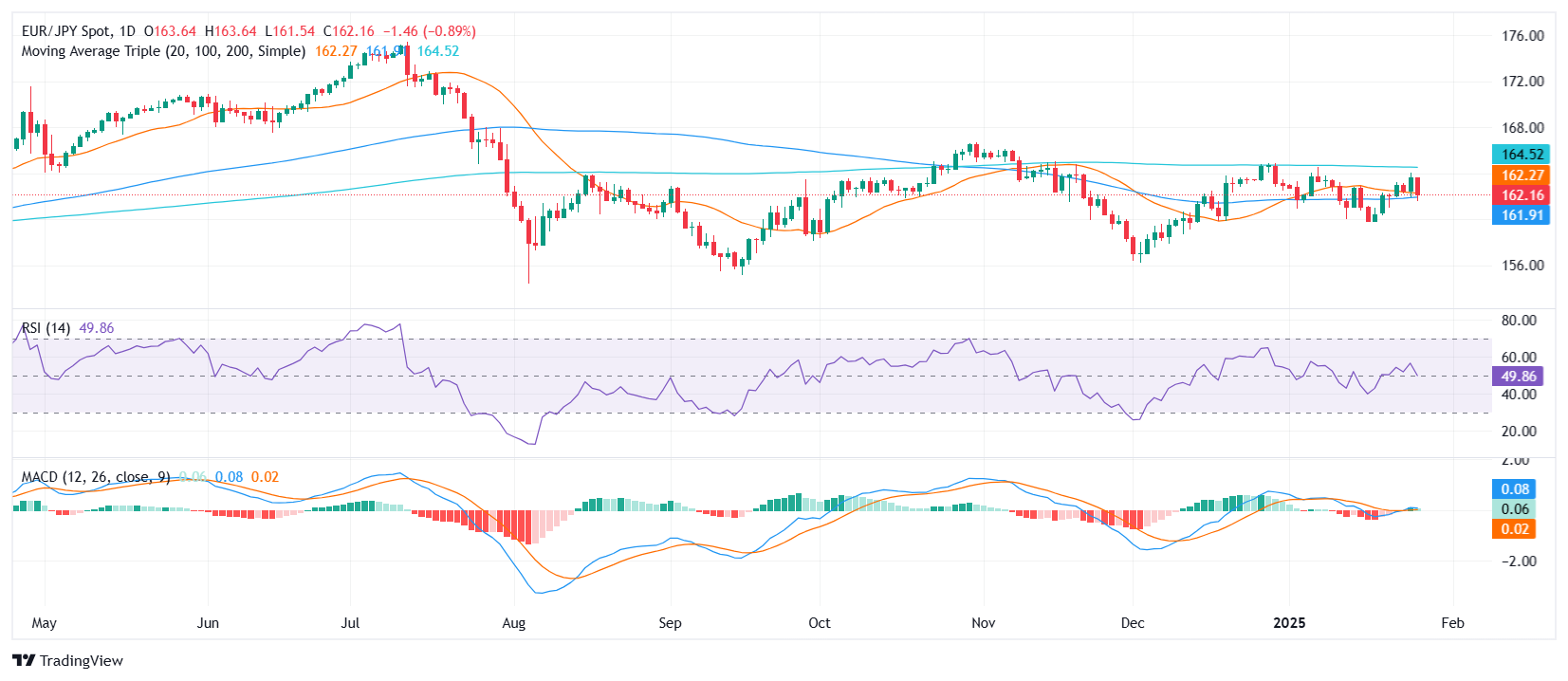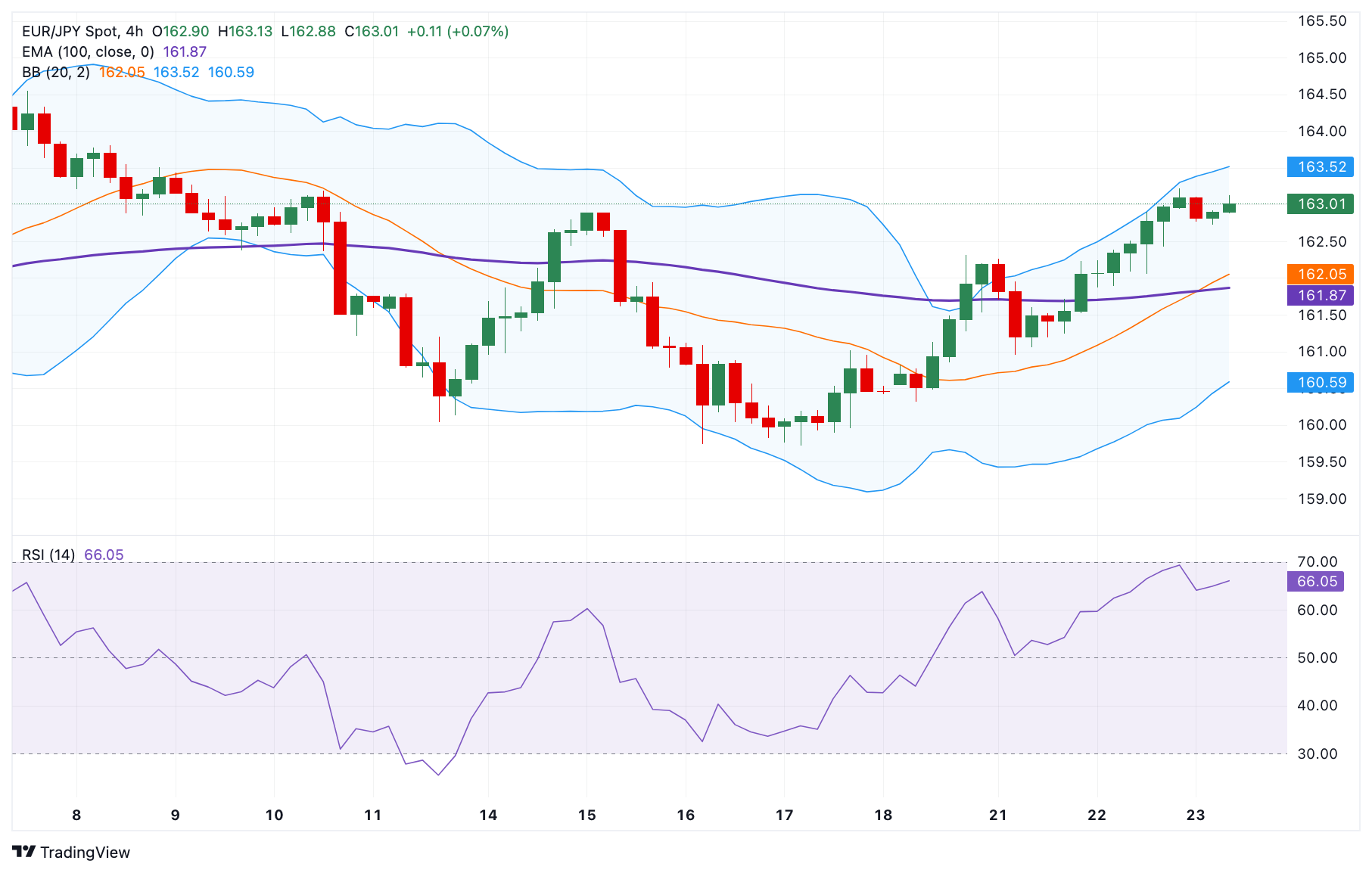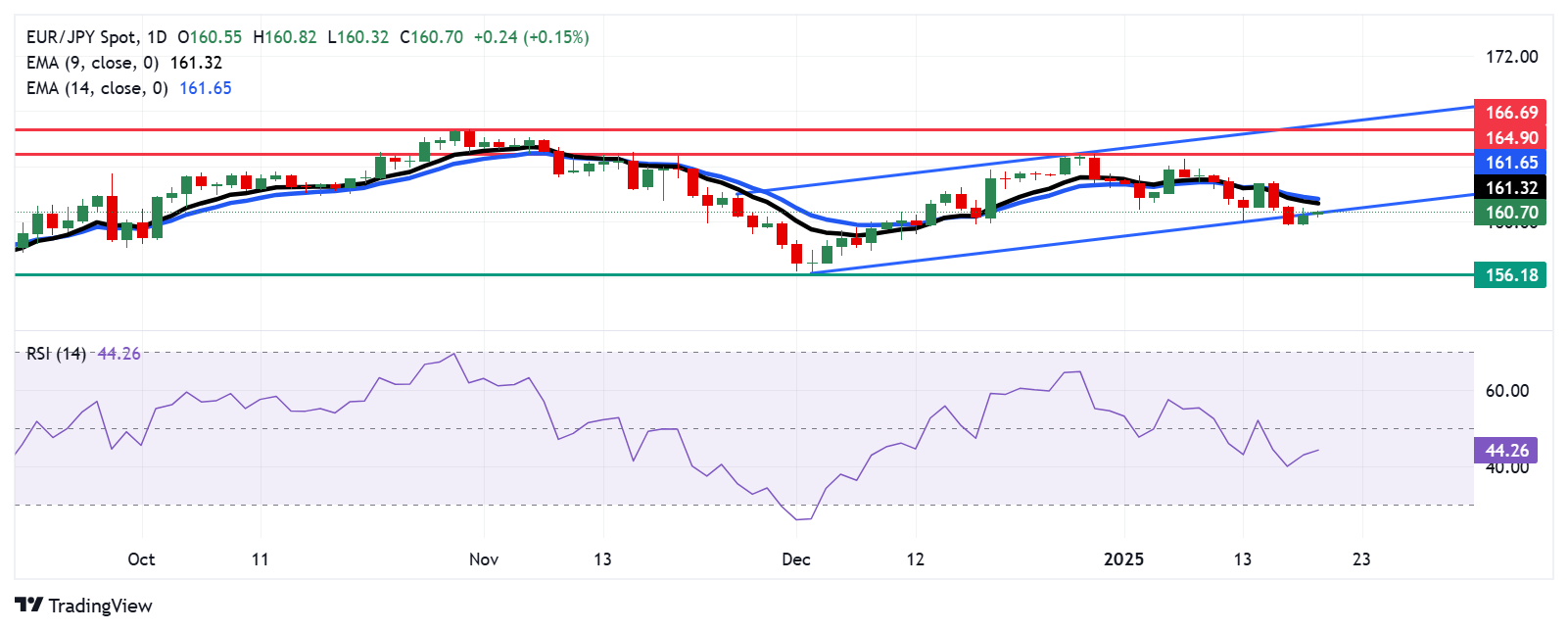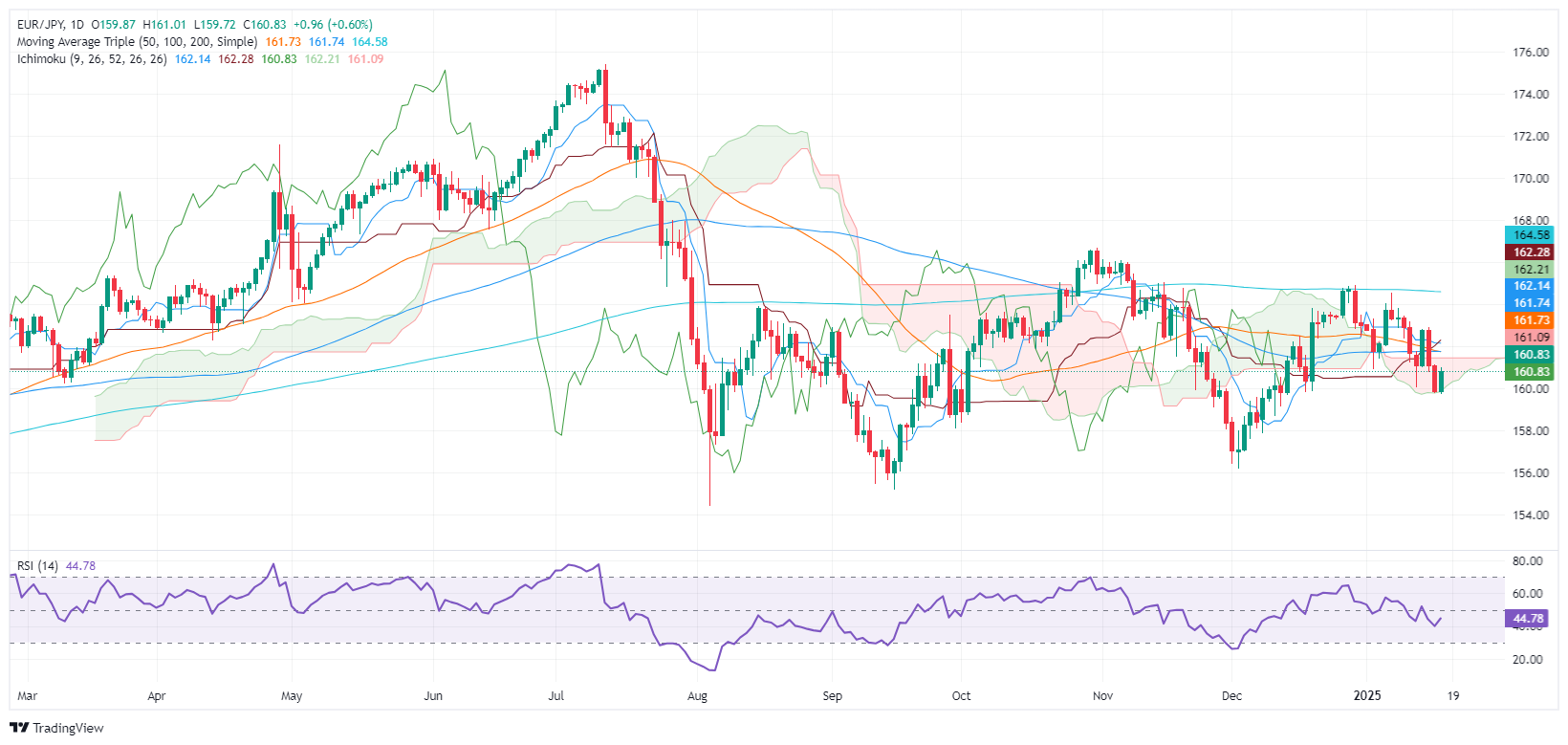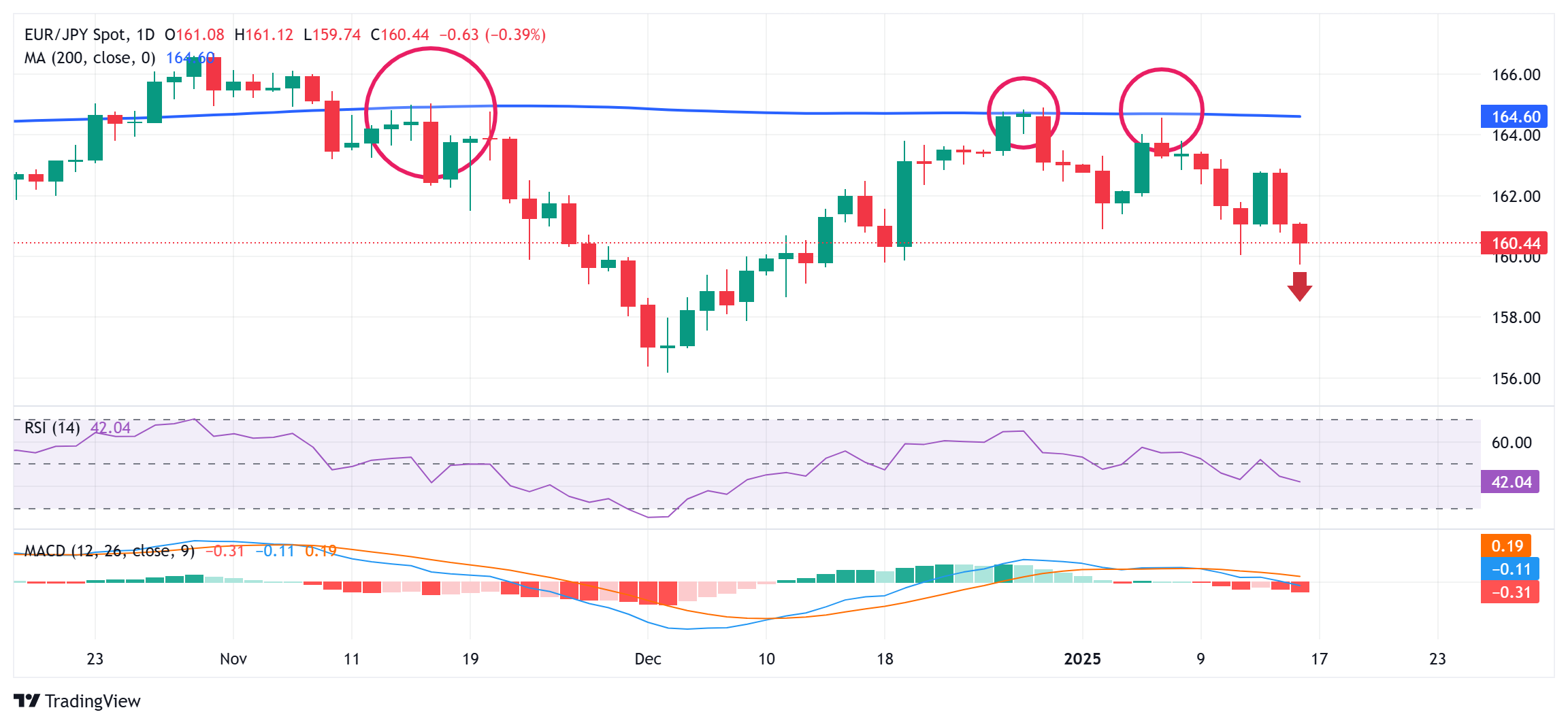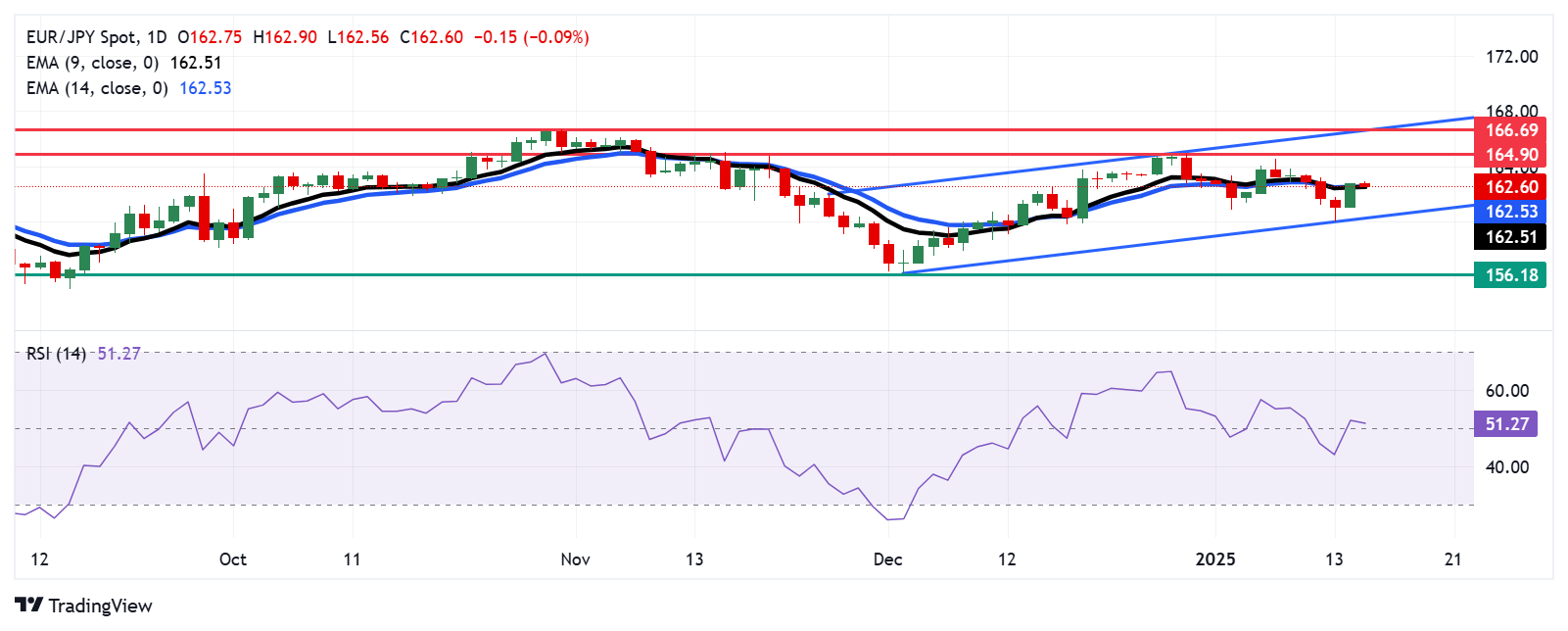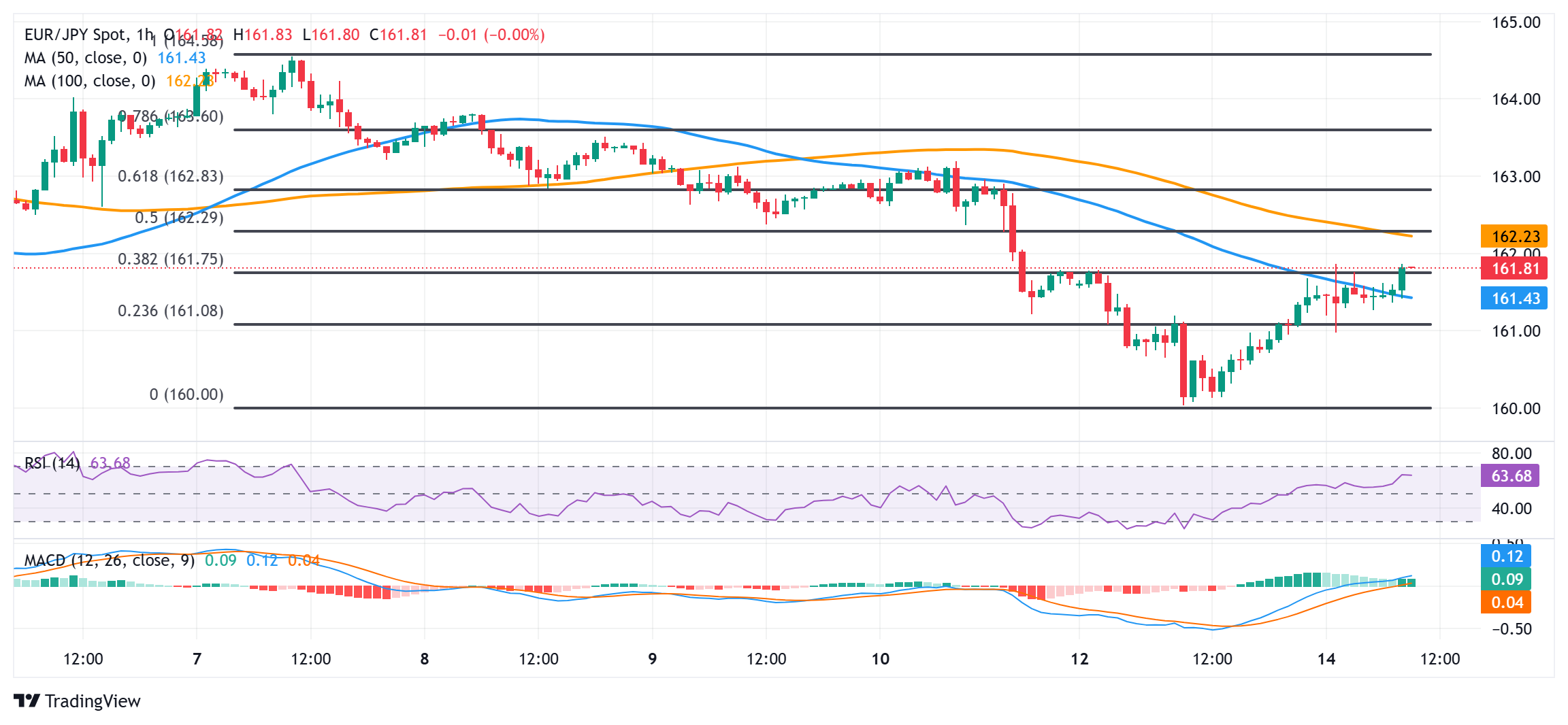- Analytics
- News and Tools
- Quotes
- Chart and quotes for EURJPY
CFD Trading Rate Euro vs Japanese Yen (EURJPY)
| Date | Rate | Change |
|---|
Related news
-
27.01.2025 15:28EUR/JPY Price Analysis: Pair slides to 162.15 as bearish momentum intensifies
- EUR/JPY drops sharply on Monday toward key 162.00 support levels.
- Technical indicators show mounting selling pressure, with the pair nearing the 20- and 100-day SMA convergence.
- Focus shifts to whether the pair can stabilize around 162.00 or risk further downside.
The EUR/JPY cross extended its losses on Monday, falling by 0.90% to settle at 162.15. The move highlights increased bearish momentum as the pair approaches a critical technical juncture, with the 20- and 100-day Simple Moving Average (SMA) convergence at 162.00 set to serve as a significant support zone. The steep decline marks a continuation of the downward trend observed over recent sessions, putting buyers under renewed pressure.
Technical indicators reinforce the bearish outlook. The Relative Strength Index (RSI) has dropped sharply to 49, slipping into negative territory and signaling weakening buying interest. Simultaneously, the Moving Average Convergence Divergence (MACD) histogram displays decreasing green bars, reflecting fading bullish traction and a growing bearish bias in the short term.
Looking ahead, the 162.00 level, where the 20- and 100-day SMAs converge, will be crucial in determining the pair’s next move. A decisive break below this area could open the door to further losses, with the next support seen at 161.50. Conversely, stabilization above this zone may encourage buyers to regroup and attempt a recovery toward the 163.00 resistance level. The pair’s ability to hold its ground at these critical levels will shape its trajectory in the coming sessions.
EUR/JPY daily chart
-
24.01.2025 11:24EUR/JPY surges to near 153.50 as Eurozone PMI returns back in black
-
24.01.2025 03:38EUR/JPY remains resilient near 163.00 despite a BoJ rate hike
-
23.01.2025 06:11EUR/JPY Price Forecast: The cross keeps bullish vibe above 163.00 ahead of BoJ rate decision
-
22.01.2025 05:45EUR/JPY climbs to one-week top, closer to mid-162.00s amid weaker JPY
-
21.01.2025 05:29EUR/JPY declines to near 161.00 as BoJ keeps door open for rate hike
-
20.01.2025 05:03EUR/JPY Price Forecast: Tests ascending channel’s lower boundary around 162.50
-
17.01.2025 15:50EUR/JPY Price Forecast: Rises sharply as bulls target 161.00
-
17.01.2025 05:07EUR/JPY bounces off one-month low, struggles to capitalize on move beyond 160.00
-
16.01.2025 04:59EUR/JPY Price Forecast: Bounces off one-month low, still deep in the red below mid-160.00s
-
15.01.2025 04:20EUR/JPY Price Forecast: Edges lower to near 162.50; initial support appears at 14-day EMA
-
14.01.2025 09:03EUR/JPY Price Forecast: Seems poised to test 162.20-162.25 confluence hurdle
-
14.01.2025 03:15EUR/JPY advances to near 161.50 due to improved market sentiment
-
10.01.2025 04:45EUR/JPY rises to near 163.00 as uncertainty persists over timing of BoJ’s rate hikes
-
09.01.2025 05:01EUR/JPY drops to multi-day low, closer to mid-162.00s amid notable JPY strength
-
08.01.2025 07:22EUR/JPY holds below 163.50 as German Factory Orders fell 5.4% in November
-
07.01.2025 04:51EUR/JPY attracts some buyers above 164.00 amid BoJ rate hike uncertainty
© 2000-2025. All rights reserved.
This site is managed by Teletrade D.J. LLC 2351 LLC 2022 (Euro House, Richmond Hill Road, Kingstown, VC0100, St. Vincent and the Grenadines).
The information on this website is for informational purposes only and does not constitute any investment advice.
The company does not serve or provide services to customers who are residents of the US, Canada, Iran, The Democratic People's Republic of Korea, Yemen and FATF blacklisted countries.
Making transactions on financial markets with marginal financial instruments opens up wide possibilities and allows investors who are willing to take risks to earn high profits, carrying a potentially high risk of losses at the same time. Therefore you should responsibly approach the issue of choosing the appropriate investment strategy, taking the available resources into account, before starting trading.
Use of the information: full or partial use of materials from this website must always be referenced to TeleTrade as the source of information. Use of the materials on the Internet must be accompanied by a hyperlink to teletrade.org. Automatic import of materials and information from this website is prohibited.
Please contact our PR department if you have any questions or need assistance at pr@teletrade.global.
